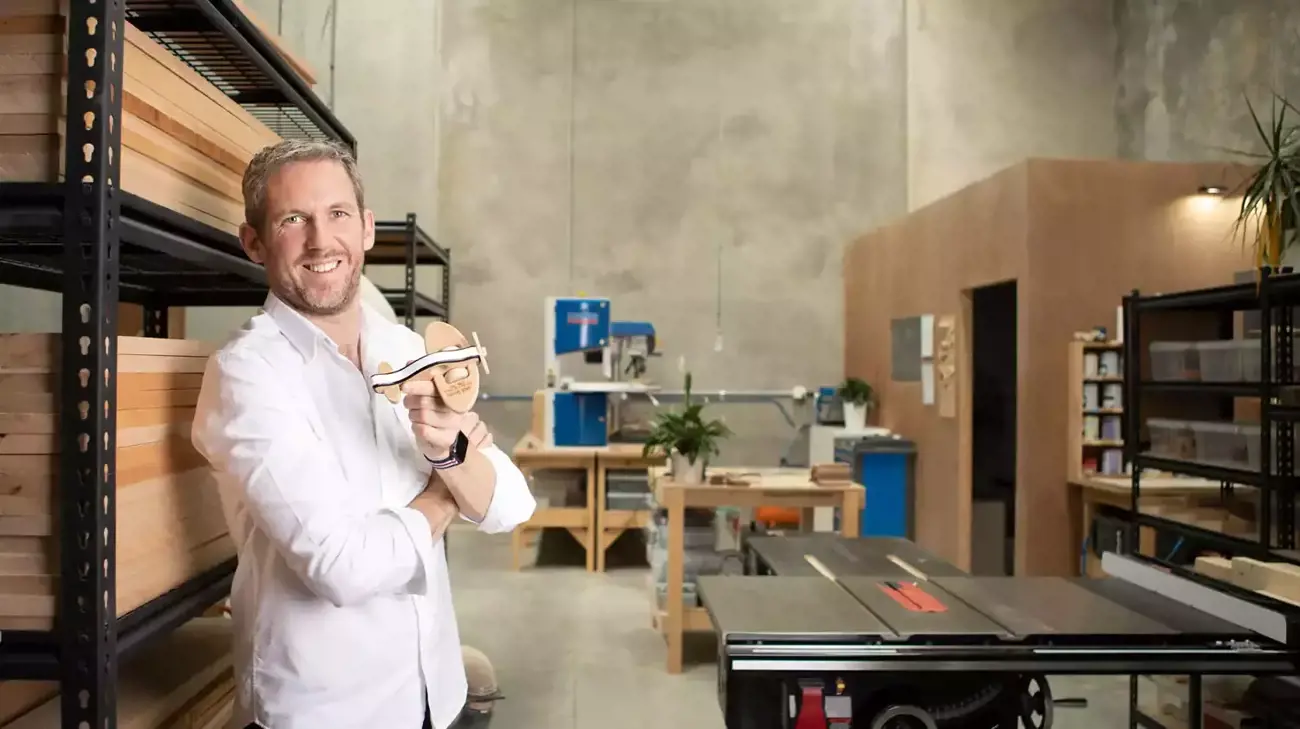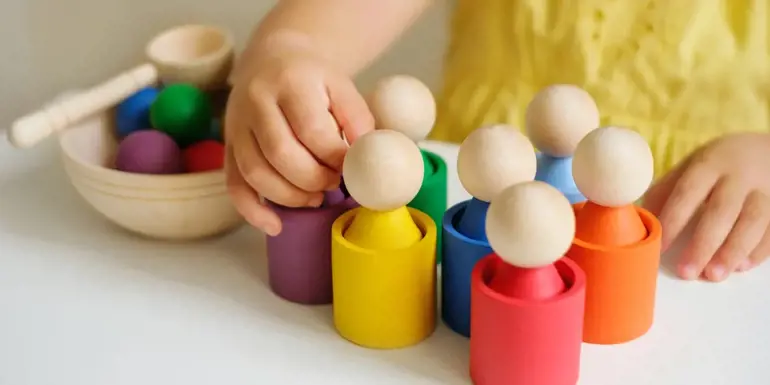A wooden toy is a wonderful way to carve out new play experiences and build skills in young children.
Wooden rattles encourage sensory play, wooden blocks develop hand-eye coordination, and wooden planes, trains and automobiles open up a world of imagination.
In Australia, Milton Ashby. creates a range of stylish timber toys, and to see how they combine form, function and fun in each design, we spoke with the workshop’s founder and chief toy-maker, Shannon Ley.
Milton Ashby. makes toys for ages zero to one, one to three, and three plus. What do you have to think about when designing playthings for babies, toddlers and preschoolers?
Toys for different ages have different practical and regulatory requirements.
Practically-speaking, an infant won’t be able to grasp something that’s too big or too heavy, they don’t care very much about what the form represents, and they cannot play with something that may be a choking hazard.
This tends to drive fairly simple shapes and objects, so our infant range includes a heart-shaped rattle with child-safe beads (to build shaking and listening skills) and a cute koala-shaped teether (designed for little hands and young gums).
As the child gets older, the nature of the item matters a lot more, so the designs tend to become more realistic and complex, with the increased design freedom allowing for a much larger array of types of toys available.
In terms of regulatory requirements, all toys must comply with the Australian Standard for Toy Safety. This, in turn, has different requirements for different age groups and types of toys.
For example, teethers and rattles have a choking hazard requirement, whereas toys for older children don’t. Many items, such as balance bikes, sewing kits and figurines, have their own specific requirements.
To play it safe for all ages, we don’t use magnets or projectiles in our wooden toys.
Aside from safety and playability, what else do you focus on when crafting wooden toys?
Over the years toys have become cheap, throwaway items, just biding their time before becoming landfill. Different wooden toy manufacturers each have their own focus, for example sustainability or being chemical-free.
For us, it’s about creating the highest quality, most durable keepsake – something that will be treasured well beyond its life as a toy. We build our toys with love, so they can be passed down as playable heirlooms.
You come from an automotive engineering background, Shannon. Now that you’re making toys, where do you find inspiration for your timber vehicles, animals and other designs?
Our inspiration comes from many sources, including what we grew up with (for example, rocking horses and ducks) and even the stuff we love as adults (such as cars and aeroplanes).
Being an Australian toy manufacturer, we simply had to do a koala and kangaroo, so found the best type of toy to make each animal into! Our koala teether and kangaroo pull-along are popular with Aussie families.
How do you manufacture your toys?
We make our toys in-house in Melbourne and our small team starts with planks of Beech or Tasmanian Oak timber. We don’t use recycled timber because we want to be certain that no toxins have seeped into the wood in its original use, and we finish our toys with natural oils and non-toxic, water-based paints and varnish.
Most of our retail orders are personalised, so we assemble all of our toys to order. Children’s names and birthdates can be laser etched into the wood, and some people ask for emojis and non-Roman alphabet characters (like Greek and Chinese letters) to be added.
Do you take orders for bespoke designs (such as a wooden computer or pull-along flamingo), and are there any new designs coming soon?
We get a steady stream of requests for bespoke creations, but it takes a lot of work, including many rounds of prototypes to make something amazing. Furthermore, once that is done, it has to be tested to the Australian Standard, so unfortunately one-off pieces are not viable.
It has been a while since we released a new design, but we have recently started work on some. We tend to start with numerous ideas, but the development process eliminates a few along the way, mainly due to aesthetic or manufacturability reasons.
It’s always exciting to see what we end up with – even we don’t always know at the start!


































